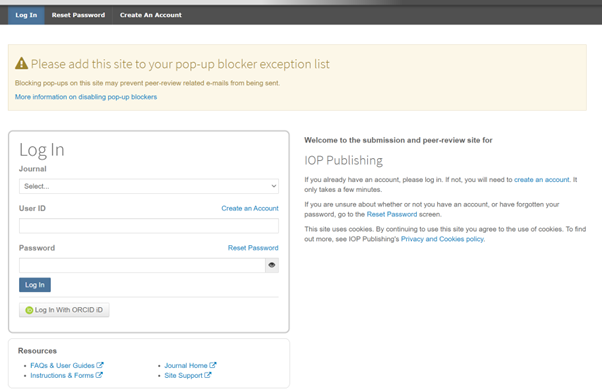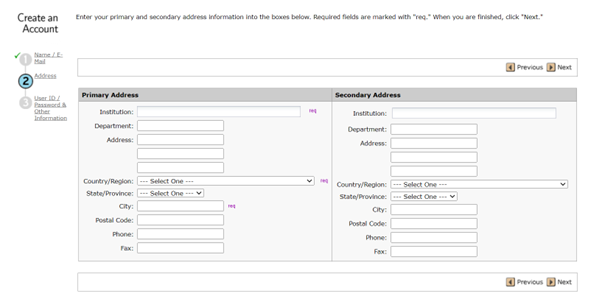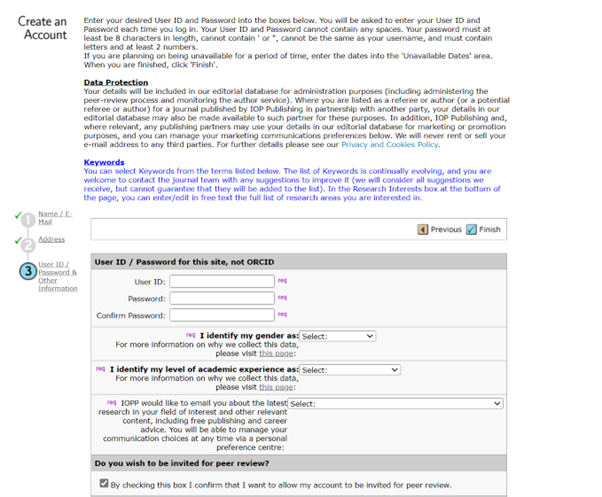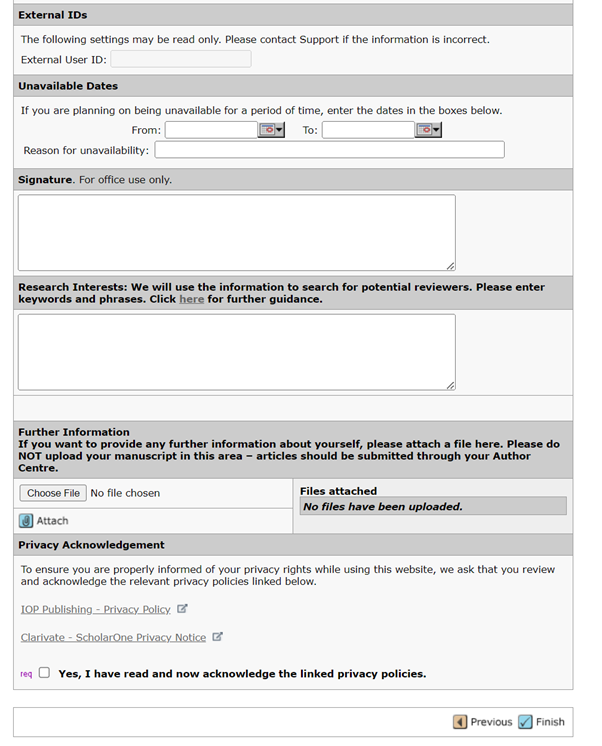Using ScholarOne
We manage all our submissions and peer review through a web-based system called ScholarOne. It is really easy to set up your account and keep it up to date.
Watch this video to find out how to set-up a ScholarOne account.
ScholarOne now supports login and account creation via your ORCID iD. See our ScholarOne login and account creation via ORCID iD guide for further details.
How to create an account on ScholarOne
1) Follow this link to access ScholarOne
2) Select ‘Create an Account’ on the toolbar:

3) Associate an ORCID iD to your account. Then fill in your name and email address, then select ‘Next’:

4) Enter details for your institution, then select ‘Next’:

5) Enter a User ID and Password. Select your gender and level of academic experience. Select if you would like to be contacted by IOP Publishing. Check the box to be invited for peer review, then scroll down:

6) Under ‘Unavailable Dates’, let us know when you are unavailable to prevent us from inviting you in this period of time. Fill in the section ‘Research Interests’. Read the IOP Publishing – Privacy Policy and the Clarivate – ScholarOne Privacy Notice, then check the box. Finally, select ‘Finish’:

Watch this video to find out how to update an existing ScholarOne account.
Updating your availability on ScholarOne
If you are planning on being unavailable for a period of time, please enter the dates into the ‘Unavailable Dates’ section of the ‘User ID/Password & Other Information’ area of your ScholarOne account. This will help ensure we do not send you requests to review a manuscript while you are unavailable.
Adding your research interests to ScholarOne
We recommend making sure that your research interests are detailed and up to date. Use these tips to maximise your chances of being selected:
- Avoid abbreviations
- Use as many keywords as possible: try to use as broad a range of terms as possible, including any synonyms or closely related fields
- Separate each term with a comma, with no unnecessary commentary
Here is an example of a good list of research interests:
magnetic nanoparticle characterization, magnetic particle imaging, magnetic nanothermometer, measuring instruments, weak signal detecting, iron oxide nanoparticles, magnetic nanoparticle thermometer, magnetic nanoparticles, biofunctionalization, dc magnetic field, magnetic fluid, magnetic particle susceptibility imaging, magnetic susceptibility imaging, magnetonanothermometry, phase delay, real-time and quantitative abilities, signal bandwidth, spatial resolution
How to submit your reviewer report on ScholarOne
To submit your reviewer report, either click the link in the email you received with the paper attached, or log into your account on ScholarOne. If you have forgotten your log in details, click ‘Reset Password’ on the log in page. This video will take you through the stages of submitting your reviewer report.
Watch this video to find out how to submit your reviewer report on ScholarOne.